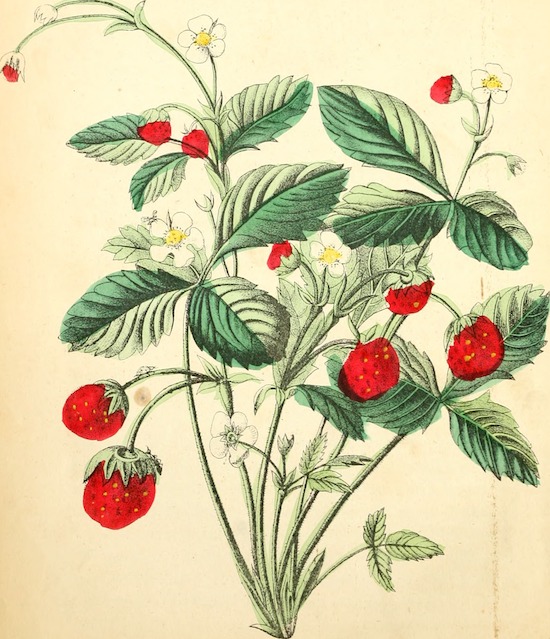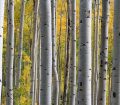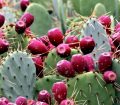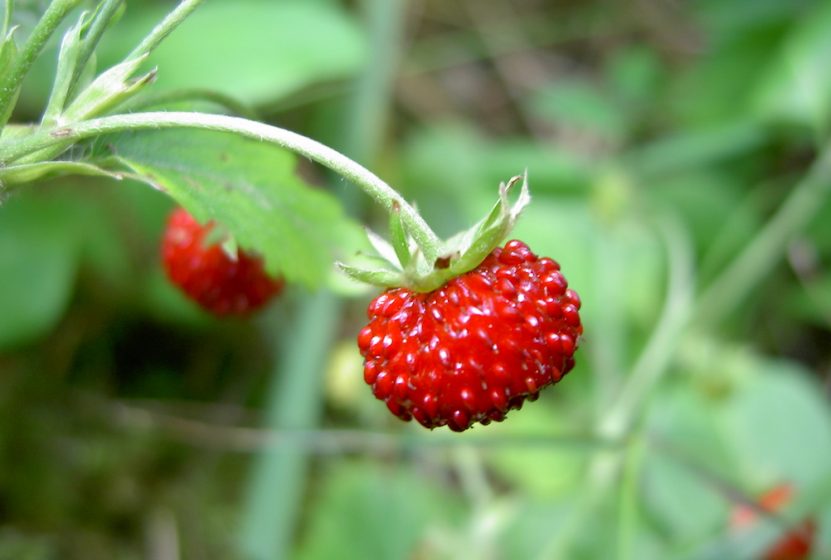Treasured for its sweet, delicate fruit, the wild strawberry (Fragaria virginiana) is a member of the rose family and is found throughout most of the U.S. and Canada.
The wild strawberry prefers fertile loamy soils in dry locations and can be found throughout North America in meadows, roadsides, hillsides, and clearings. The plant grows in clumps and propagates by sending out runners in the spring.
This ground-hugging perennial plant grows up to six inches tall with leaves that extend from a central hairy stalk. Each leaf is about three inches across and split into three one-inch leaflets.
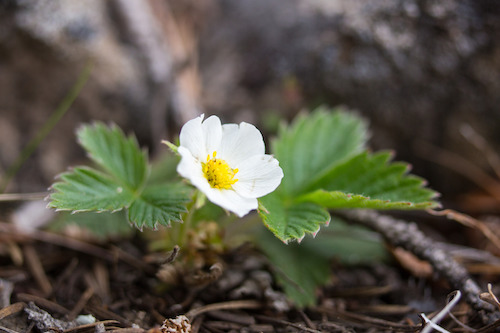
The wild strawberry produces white flowers from April through June. Each flower has five petals surrounding a yellow center. Approximately 30 days after flowering, the strawberry fruit is ready to harvest. Depending on the elevation, you can find ripe wild strawberries as early as June in the lower elevations and as late as August or September in the Rocky Mountains.
The fruit is about ¼-inch in diameter and is much sweeter than the grocery store variety. The commercially grown strawberry is a cross between the Wild or Virginia Strawberry (Fragaria virginiana) and the larger fruited Chilean or South American (Fragaria chiloensis).
The wild strawberry’s flowers attract pollinators like bees, flies, and butterflies. The plant is a favorite food for caterpillars and aphids and also provides cover for toads, salamanders, and spiders. Upland game birds, songbirds, and various mammals also enjoy dining on the foliage and fruit.
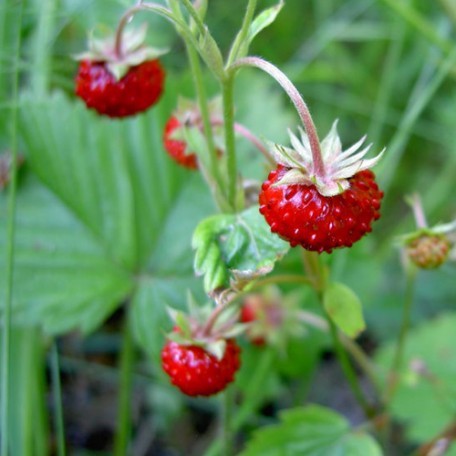
The wild strawberry fruit is high in Vitamin C, potassium, and is considered an excellent source of anthocyanins, which help reduce the risk of heart disease. In addition to strawberry’s delicious taste, the juice has been used to settle upset stomachs, dysentery, as well as treat facial sores.
Native Americans ground wild strawberries into a mash to form dried cakes. They dried and powdered the leaves to use a disinfectant to treat open sores. The dried eaves can also be used to make tea, and are believed to have diuretic and laxative properties.
The wild strawberry played a romantic role in Native American mythology. Shortly after the first man and woman were created, the couple were arguing, and the woman left in anger. The Great Spirit placed sweet berries along her path in an attempt to slow her down so the man could catch up and apologize. Blueberries, raspberries, currants, and blackberries were put in her way with no effect.
When the wild strawberry appeared, she stopped and tasted it. The fruit was so good the woman stayed in one place picking strawberries until the man caught up to her and apologized. According to Native American lore, that is why the wild strawberry is in the shape of the heart.
